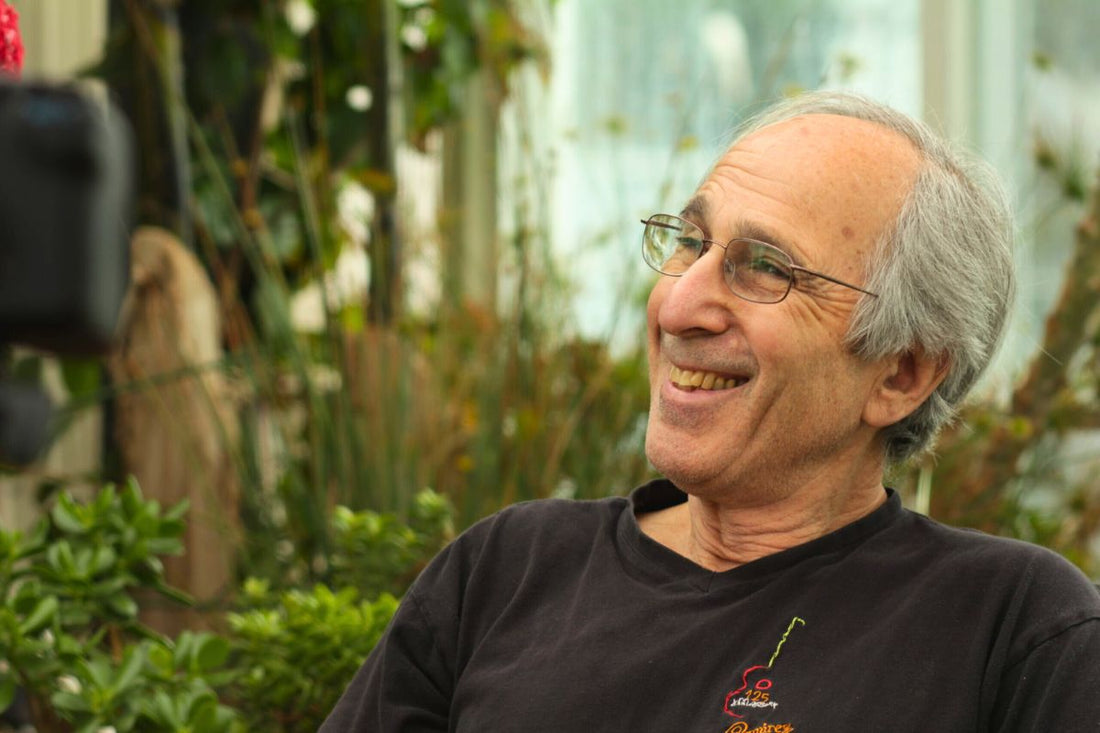A Rare Bird: A Portrait Of Luthier Michael Gurian

Michael Gurian is a living legend in the world of guitars. A product of the Greenwich Village scene of the 1960s, Gurian started out making and repairing classical guitars, ouds and lutes. As his business grew, he expanded to steel string guitars and eventually created one of the first "boutique" guitar factories of the modern era. To this day, he continues to bridge the old world with the new.
Though Gurian's guitar business faced many setbacks, his instruments continue to be loved by musicians in the know. David Lindley, Paul Simon and Bob Dylan are just three famous musicians he's built instruments for.
Gurian now owns a major guitar parts manufacturing business. From his floating factory in Seattle's Ballard neighborhood, he and his team create inlays, trim, bridge pins and more for many of today's largest guitar makers. In this Fretboard Journal documentary, we talk to Gurian about his fascinating career and what he's up to today. Directed by Matt Miles for the Fretboard Journal magazine.
About Michael Gurian
Michael Gurian is a major supplier of custom parts to guitar manufacturers worldwide and a builder of some of the most distinctive steel-strings to appear in a long time. Born in 1943, a Brooklynite of Armenian descent, he took lessons on various instruments and developed a fondness for wood. He later studied sculpture at Long Island University, took up classical guitar, and taught music in Roslyn, New York. With his studio apartment for a workshop, Michael built his first guitar-a copy of a classical made by Victor Manuel Piniero, a student of Velasquez. In 1965 he moved to a three-room shop in Greenwich Village, and with two assistants began building classical instruments. Traditional steel-strings were added four years later, and Gurian introduced his own distinctive body shapes soon after that. The company moved to Bedford Street and then Grand Street, his crew of builders growing to 15. In 1971 he relocated in Hinsdale, New Hampshire, because of that state’s favorable business climate. Vintage retailer Matt Umanov encouraged him to build a cutaway, and he did. It became a regular member of the line. A terrible 1979 fire resulting from a boiler explosion destroyed not only all of Gurian’s guitars but also his tooling and machinery as well. After the half-million-dollar loss he rebuilt and grew, recovering with remarkable perseverance from a defeat that would have sent a lesser person back to guitar teaching for good. By late 1979 Gurian was employing over two dozen people and servicing nearly 200 dealers worldwide. Gurian’s background as an expert with old-fashioned techniques manifests itself in his instruments, whose unusually rounded bodies are most appealing. They combine classical appointments and modern interior construction; the tone is bright and strong.
-
All About Tonewoods (21)
-
All About Tools (1)
-
Building Electrics (5)
-
Building Skills (11)
-
Driftwood Guitars (6)
-
From The Bench (1)
-
Guitar Building (20)
-
Guitar Maintenance (3)
-
La Due Pragmatic Luthier (7)
-
Guitar Repair (5)
-
Luthier Wisdom (18)
-
Press Releases (4)
-
Schaefer DIY Guitar Making (9)
-
The Builders (72)
-
Workshop Talk (32)














